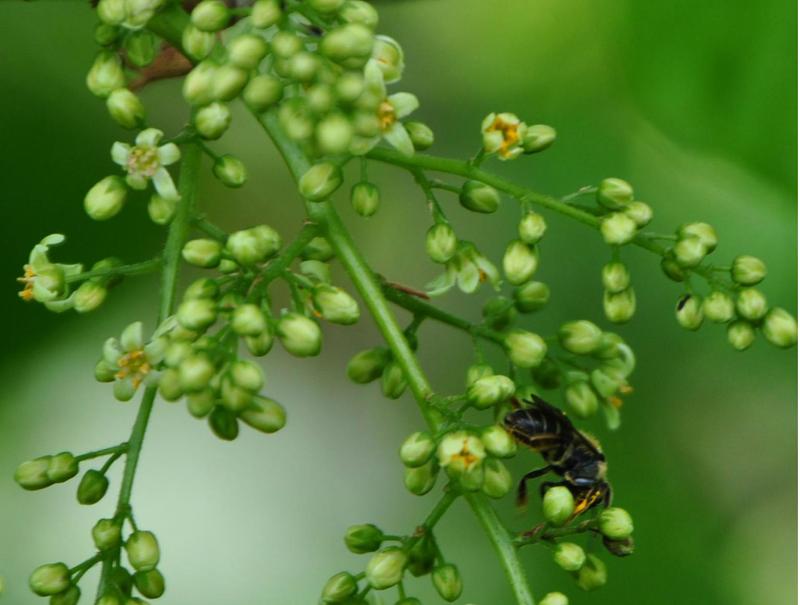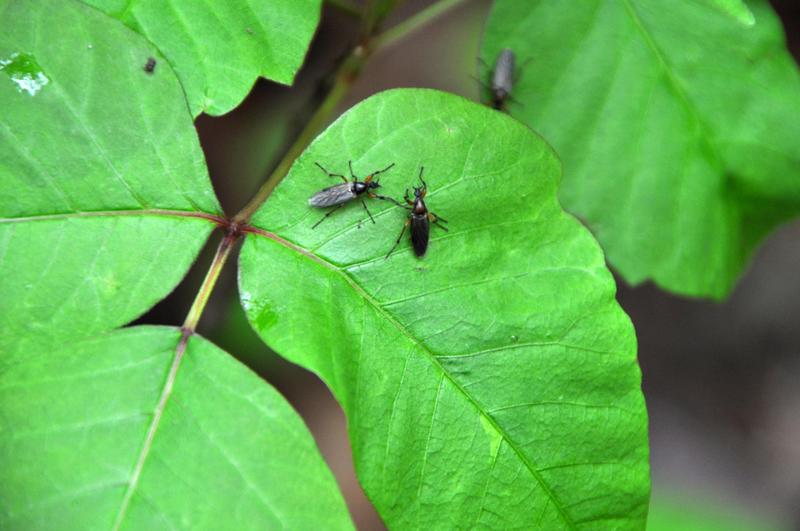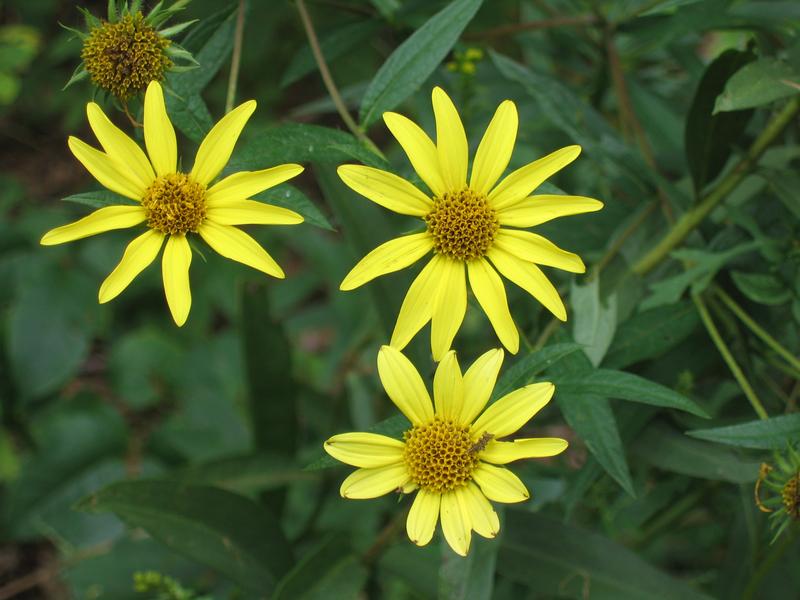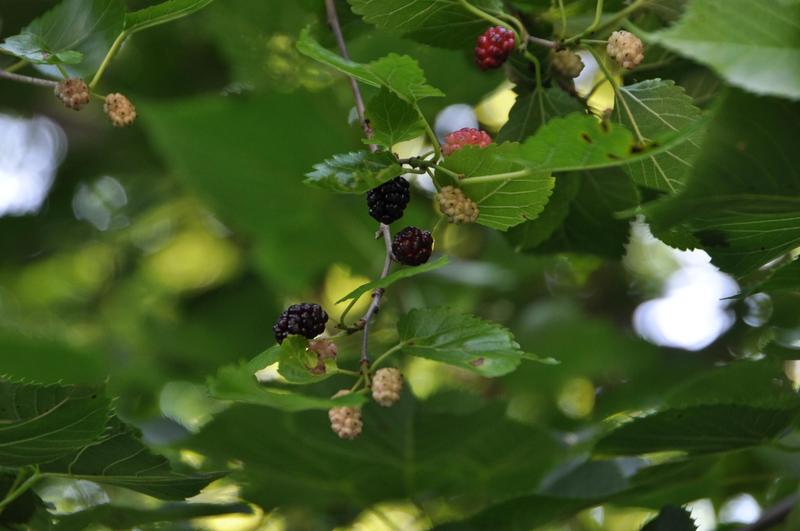
Marielle Anzelone is an urban ecologist and the founder of NYC Wildflower Week. For three weeks this spring, she's be speaking with WNYC's Richard Hake about what's blooming in our region. Hear her previous recommendations here and here.
Poison ivy (Toxicodendron radicans) comes with a warning. Commonly growing in New York City’s woodland edges, its "leaves of three, let it be” reputation is meant to dissuade humans from touching the plants. Brushing against any part of it can result in a terrifically itchy dermatitis, and studies show that rising carbon dioxide levels lead to a more toxic form of urushiol, the resin that causes the rash. But while humans may have reason to be wary, many other animals don’t seem to have a negative reaction to it.
In fact, most wildlife appear to be fans of this native species, in flower now. The tiny yellowish green blooms are often dotted with ants, and the glossy,compound leaves attract caterpillars of some species of owlet moths.
In fall, poison ivy is easy to identify—look for flashes of red among the green. Hairy ropes of vines climb up into the tree canopy, with fiery scarlet leaves that are difficult to miss. These bright foliar colors attract migratory birds, which stop to eat the fruits. The waxy white drupes are high in fat and important fuel for long avian journeys.
With the approach of the solstice, another floral parade is about to begin, starring composites: asters, bonesets, joe-pye weeds, goldenrods, and sunflowers. Summer is the aster family’s time to shine.
The season also brings the “fruits” of nature’s labors—literally. Mulberries and juneberries are ripening on branches now, with blackberries and blueberries to follow next month.
To see all of this abundance, try Marine Park in Brooklyn, Forest Park in Queens, and Conference House Park in Staten Island.



